-
 Bitcoin
Bitcoin $81,470.6259
-2.28% -
 Ethereum
Ethereum $1,790.7527
-2.95% -
 Tether USDt
Tether USDt $0.9999
0.03% -
 XRP
XRP $2.0607
-6.00% -
 BNB
BNB $591.1549
-2.91% -
 Solana
Solana $124.2009
-1.34% -
 USDC
USDC $1.0000
0.01% -
 Dogecoin
Dogecoin $0.1621
-5.61% -
 Cardano
Cardano $0.6372
-6.99% -
 TRON
TRON $0.2326
0.82% -
 Toncoin
Toncoin $3.8888
0.80% -
 Chainlink
Chainlink $13.0942
-5.24% -
 UNUS SED LEO
UNUS SED LEO $9.1023
-5.55% -
 Stellar
Stellar $0.2605
-3.86% -
 Avalanche
Avalanche $18.3294
-6.73% -
 Shiba Inu
Shiba Inu $0.0...01207
-4.91% -
 Sui
Sui $2.2362
-7.91% -
 Hedera
Hedera $0.1579
-8.64% -
 Polkadot
Polkadot $3.9790
-4.28% -
 Litecoin
Litecoin $81.6801
-5.49% -
 MANTRA
MANTRA $6.1848
-3.34% -
 Bitcoin Cash
Bitcoin Cash $291.7782
-5.06% -
 Dai
Dai $0.9999
-0.02% -
 Bitget Token
Bitget Token $4.4587
-4.83% -
 Ethena USDe
Ethena USDe $0.9999
-0.01% -
 Pi
Pi $0.6892
-10.83% -
 Hyperliquid
Hyperliquid $12.5163
-0.38% -
 Monero
Monero $215.9594
-0.93% -
 Uniswap
Uniswap $5.7942
-3.66% -
 Aptos
Aptos $5.1254
-4.01%
What is Token Swap?
Cryptocurrency token swaps, performed on CEXs or DEXs, involve exchanging one token for another. Security, gas fees, and slippage are key considerations; choose reputable platforms and understand the process to minimize risk.
Mar 25, 2025 at 01:35 pm

Key Points:
- Token swaps facilitate the exchange of one cryptocurrency token for another.
- Swaps can occur on centralized exchanges (CEXs) or decentralized exchanges (DEXs).
- The process varies depending on the platform used, but generally involves connecting a wallet and approving the transaction.
- Security considerations are paramount, requiring careful selection of platforms and adherence to best practices.
- Understanding gas fees and slippage is crucial for efficient and cost-effective swaps.
What is Token Swap?
A token swap, in the cryptocurrency context, refers to the process of exchanging one cryptocurrency token for another. This is analogous to exchanging one fiat currency for another, but operates within the blockchain ecosystem. The tokens involved can represent various assets, from utility tokens granting access to a platform's services to security tokens representing ownership in a project. The process itself can vary depending on the platform utilized, but the core function remains consistent: exchanging one token for another.
Types of Token Swaps:
Token swaps primarily occur on two types of exchanges: centralized exchanges (CEXs) and decentralized exchanges (DEXs). CEXs, such as Coinbase or Binance, are traditional exchanges where users trade tokens through a custodial platform. They offer a user-friendly interface but relinquish control of your funds to the exchange. DEXs, on the other hand, are platforms built on blockchain technology, allowing peer-to-peer token swaps without the need for a central intermediary. This provides greater control and security but can sometimes have higher transaction fees and lower liquidity.
How to Perform a Token Swap:
The steps involved in a token swap differ depending on the platform used. However, the general process usually follows these steps:
- Choose a Platform: Select a reputable CEX or DEX based on your needs and preferences. Consider factors such as fees, security, and available token pairs.
- Connect Your Wallet: Connect your cryptocurrency wallet to the chosen platform. This allows the platform to access your tokens and execute the swap.
- Select Tokens: Specify the token you want to exchange (the source token) and the token you want to receive (the destination token).
- Enter Amount: Indicate the amount of the source token you wish to swap. The platform will automatically calculate the equivalent amount of the destination token based on the current exchange rate.
- Review and Confirm: Carefully review all details of the swap, including fees and slippage. Once you are satisfied, confirm the transaction.
- Approve Transaction: Most platforms require you to approve the transaction on your connected wallet, usually via a signature request.
Security Considerations:
Security is paramount when performing token swaps. Always prioritize reputable and established platforms with a strong security track record. Beware of scams and phishing attempts, especially when dealing with lesser-known projects or DEXs. Never share your private keys or seed phrases with anyone. Enable two-factor authentication (2FA) wherever possible to enhance security. Regularly review your transaction history to detect any unauthorized activity.
Understanding Gas Fees and Slippage:
Gas fees are transaction fees paid to miners or validators on the blockchain to process your swap. These fees vary depending on the network congestion and the complexity of the transaction. Slippage refers to the difference between the expected exchange rate and the actual exchange rate at the time the transaction is executed. High slippage can occur during periods of high volatility or low liquidity. It's crucial to understand these factors to ensure cost-effective and efficient token swaps.
Different Types of Token Swaps:
Beyond the basic exchange of one token for another, more complex token swaps exist. These can involve atomic swaps, where two parties directly exchange tokens without the need for an intermediary, or automated market makers (AMMs), which utilize decentralized liquidity pools to facilitate swaps. Understanding these variations is crucial for navigating the complexities of the decentralized finance (DeFi) ecosystem.
The Role of Smart Contracts in Token Swaps:
Many token swaps, particularly on DEXs, rely on smart contracts. These self-executing contracts automate the exchange process, ensuring transparency and security. Understanding the functionality of the smart contract used is essential, as any vulnerabilities could compromise the swap. Audits of smart contracts are therefore crucial before interacting with them.
Token Swaps and Liquidity Pools:
Decentralized exchanges often use liquidity pools to facilitate token swaps. These pools contain a reserve of both tokens involved in the swap, allowing for immediate execution. The price of the tokens within the pool is determined by the ratio of the tokens in the reserve. Understanding how liquidity pools function is crucial for understanding how prices are determined and potential risks associated with swaps.
Frequently Asked Questions:
Q: Are token swaps safe?
A: The safety of a token swap depends largely on the platform used. Reputable CEXs and DEXs with strong security measures generally offer a secure experience. However, always practice due diligence and prioritize security best practices.
Q: What are the fees associated with token swaps?
A: Fees vary depending on the platform and the network used. CEXs usually charge trading fees, while DEXs typically charge gas fees. These fees can fluctuate based on network congestion.
Q: What is slippage in a token swap?
A: Slippage is the difference between the expected exchange rate and the actual rate at the time of execution. It's caused by market volatility and can result in receiving fewer tokens than anticipated.
Q: How do I choose a reliable platform for token swaps?
A: Consider factors such as platform reputation, security measures, trading volume, fees, and available token pairs. Read reviews and research the platform thoroughly before using it.
Q: Can I swap tokens anonymously?
A: While some DEXs offer a degree of anonymity, complete anonymity is generally not possible. Most platforms require some form of identification to comply with KYC/AML regulations.
Q: What happens if a token swap fails?
A: If a swap fails due to technical issues, your funds are usually returned to your wallet. However, if the failure is due to a security breach or a scam, you may lose your funds. Always use reputable platforms.
Disclaimer:info@kdj.com
The information provided is not trading advice. kdj.com does not assume any responsibility for any investments made based on the information provided in this article. Cryptocurrencies are highly volatile and it is highly recommended that you invest with caution after thorough research!
If you believe that the content used on this website infringes your copyright, please contact us immediately (info@kdj.com) and we will delete it promptly.
- Peter Schiff Doubles Down on His Deep Dislike for Bitcoin, Mocking Its "Digital Gold" Identity
- 2025-03-31 16:50:12
- Solana's (SOL) Price Dipped Below $140 as the Market Took a Slight Beating
- 2025-03-31 16:50:12
- Astherus Rebrands to Aster, Shifting Strategic Focus to Become the Leading Decentralized Perpetuals Exchange (Perps DEX)
- 2025-03-31 16:45:12
- Top Crypto to Buy With the Most Bullish Sentiment
- 2025-03-31 16:45:12
- Dawgz AI ($DAGZ) - The Coin With AI Technology
- 2025-03-31 16:40:13
- Kaspa (KAS) Price Prediction for April 2025
- 2025-03-31 16:40:13
Related knowledge

What kind of people does the currency term Maxi represent?
Mar 29,2025 at 08:49pm
Decoding the 'Maxi' in CryptocurrencyThe term 'Maxi' in the cryptocurrency world doesn't refer to a specific demographic or group with shared characteristics like age or profession. Instead, it's a label used to describe individuals holding a strong, often unwavering, belief in Bitcoin's dominance and superiority over all other cryptocurrencies. They a...
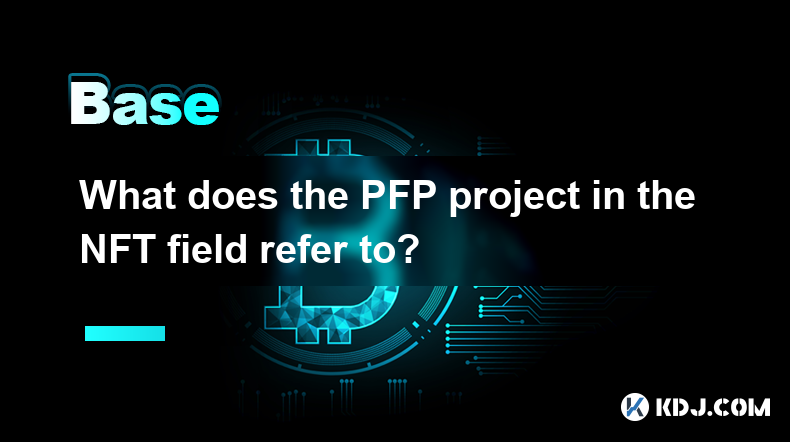
What does the PFP project in the NFT field refer to?
Mar 29,2025 at 07:42pm
Understanding Profile Picture (PFP) Projects in the NFT SpaceThe term 'PFP' in the NFT world stands for Profile Picture. These are NFT projects centered around unique digital avatars, often designed in a consistent artistic style, that users can set as their profile picture across various online platforms. Think of them as collectible digital trading c...
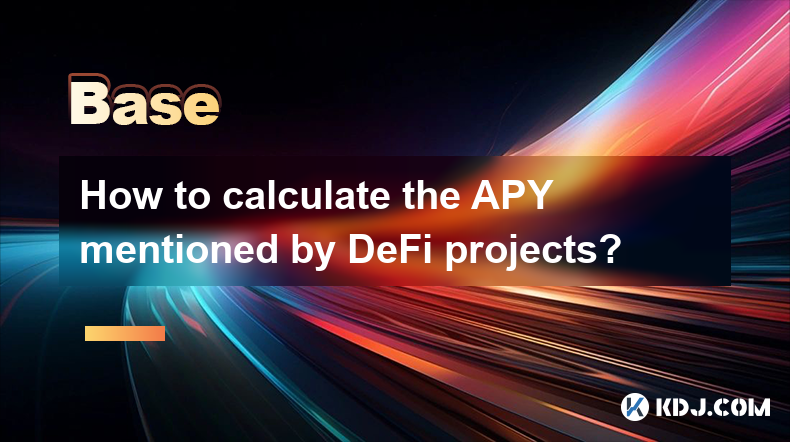
How to calculate the APY mentioned by DeFi projects?
Mar 31,2025 at 12:07am
Understanding APY in DeFiAnnual Percentage Yield (APY) is a crucial metric in DeFi, representing the yearly return on investment, considering the effects of compounding. Unlike the simple Annual Percentage Rate (APR), APY accounts for the reinvestment of earnings throughout the year. This leads to significantly higher returns, especially with high-freq...
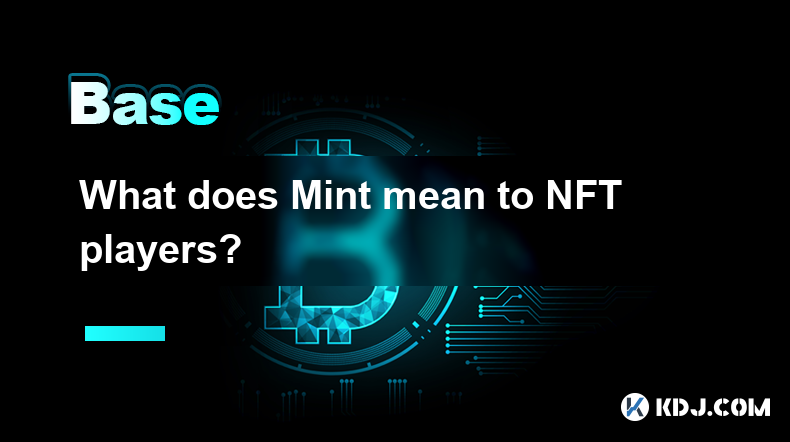
What does Mint mean to NFT players?
Mar 31,2025 at 06:56am
Understanding the 'Mint' Process in the NFT WorldFor NFT players, 'minting' refers to the process of creating a new, unique NFT and adding it to a blockchain. This isn't simply copying an image; it involves registering the digital asset's ownership and metadata onto the blockchain, making it verifiable and tamper-proof. Think of it as officially bringi...
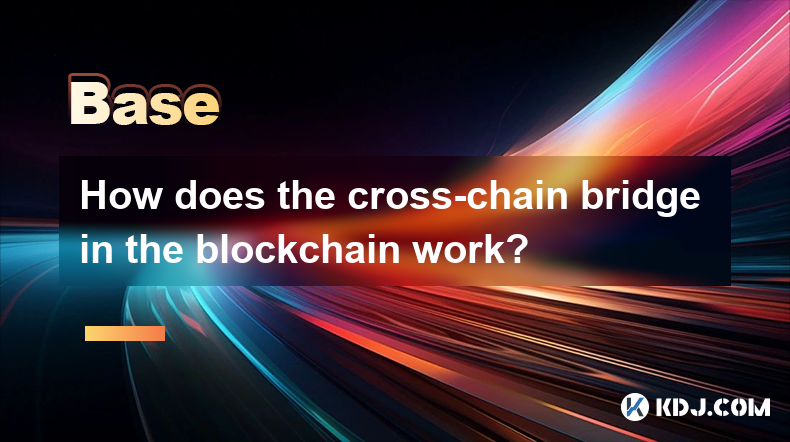
How does the cross-chain bridge in the blockchain work?
Mar 30,2025 at 05:14am
Understanding Cross-Chain Bridges in BlockchainCross-chain bridges are crucial infrastructure in the blockchain ecosystem, enabling the transfer of tokens and data between different blockchain networks. This functionality is essential because blockchains, while offering unique advantages, often operate in isolation. Bridges overcome this limitation, fo...
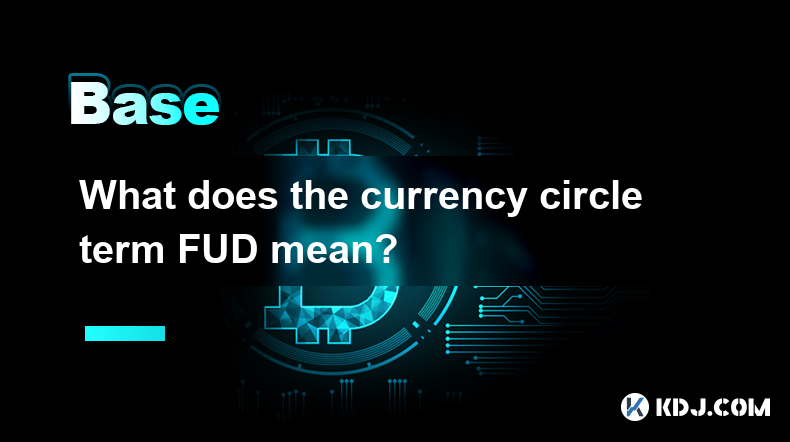
What does the currency circle term FUD mean?
Mar 30,2025 at 07:14pm
Decoding FUD in the Cryptocurrency WorldFUD, a common acronym in the cryptocurrency space, stands for Fear, Uncertainty, and Doubt. It's a deliberate strategy used to manipulate market sentiment and often involves spreading misinformation or exaggerating negative news to drive down the price of a cryptocurrency or the entire market. Understanding FUD i...

What kind of people does the currency term Maxi represent?
Mar 29,2025 at 08:49pm
Decoding the 'Maxi' in CryptocurrencyThe term 'Maxi' in the cryptocurrency world doesn't refer to a specific demographic or group with shared characteristics like age or profession. Instead, it's a label used to describe individuals holding a strong, often unwavering, belief in Bitcoin's dominance and superiority over all other cryptocurrencies. They a...

What does the PFP project in the NFT field refer to?
Mar 29,2025 at 07:42pm
Understanding Profile Picture (PFP) Projects in the NFT SpaceThe term 'PFP' in the NFT world stands for Profile Picture. These are NFT projects centered around unique digital avatars, often designed in a consistent artistic style, that users can set as their profile picture across various online platforms. Think of them as collectible digital trading c...

How to calculate the APY mentioned by DeFi projects?
Mar 31,2025 at 12:07am
Understanding APY in DeFiAnnual Percentage Yield (APY) is a crucial metric in DeFi, representing the yearly return on investment, considering the effects of compounding. Unlike the simple Annual Percentage Rate (APR), APY accounts for the reinvestment of earnings throughout the year. This leads to significantly higher returns, especially with high-freq...

What does Mint mean to NFT players?
Mar 31,2025 at 06:56am
Understanding the 'Mint' Process in the NFT WorldFor NFT players, 'minting' refers to the process of creating a new, unique NFT and adding it to a blockchain. This isn't simply copying an image; it involves registering the digital asset's ownership and metadata onto the blockchain, making it verifiable and tamper-proof. Think of it as officially bringi...

How does the cross-chain bridge in the blockchain work?
Mar 30,2025 at 05:14am
Understanding Cross-Chain Bridges in BlockchainCross-chain bridges are crucial infrastructure in the blockchain ecosystem, enabling the transfer of tokens and data between different blockchain networks. This functionality is essential because blockchains, while offering unique advantages, often operate in isolation. Bridges overcome this limitation, fo...

What does the currency circle term FUD mean?
Mar 30,2025 at 07:14pm
Decoding FUD in the Cryptocurrency WorldFUD, a common acronym in the cryptocurrency space, stands for Fear, Uncertainty, and Doubt. It's a deliberate strategy used to manipulate market sentiment and often involves spreading misinformation or exaggerating negative news to drive down the price of a cryptocurrency or the entire market. Understanding FUD i...
See all articles






















































































